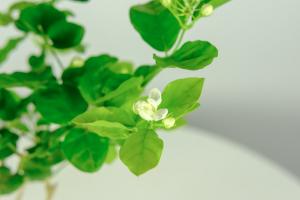Why Won't Plants Grow in Stagnant Water?
Stagnant water is water that is still and does not have any movement. It is not only unpleasant to the eyes but also unsuitable for the growth of plants. A plant requires specific living conditions for healthy growth, including water that is free from harmful chemicals and stagnant water that promotes the growth of harmful bacteria. This article discusses the reasons why plants do not grow well in stagnant water.
Insufficient Oxygen
Plants need oxygen to survive and grow. When the water is stagnant, it reduces the level of oxygen that is available to the plants. The lack of oxygen can cause the roots to suffocate and die, making it impossible for the plant to absorb nutrients and thrive. The more stagnant the water is, the less oxygen the roots have access to, leading to the eventual death of the plant.
Bacterial Growth
Stagnant water is a breeding ground for harmful bacteria that cause diseases in plants. It promotes the growth of harmful bacteria, viruses, and fungi that spread from one plant to another. These pathogens infect the plant and cause damage to the leaves, stems, and roots. Plants do not grow well in unhealthy environments, and stagnant water makes it easy for these harmful pathogens to thrive, leading to the inevitable death of the plant.
Chemical Imbalance
Water that stays still for an extended period causes an imbalance in its chemical contents. The build-up of nutrients, minerals, and salts in the water negatively impacts the plant's growth. The water in which the plant grows must contain the right amount of nutrients, minerals, and salts to support the plant's healthy life cycle. Stagnant water cannot provide this balance, and the plants cannot grow correctly.
Root Suffocation
Plants breathe through their roots. They take in water and oxygen through the roots and carbon dioxide through the leaves. When the water is stagnant, the roots have difficulty absorbing the oxygen they need to breathe. This lack of oxygen causes the roots to suffocate and die, leading to the eventual death of the plant. The roots also become waterlogged and cannot absorb the necessary nutrients, minerals, and salts, which leads to the stunted growth of the plant.
Conclusion
In conclusion, stagnant water is bad for plant growth. It causes a lack of oxygen, promotes the growth of harmful bacteria, causes a chemical imbalance, and suffocates the roots. Plants cannot thrive in environments where their essential needs are not met. It is essential to provide them with fresh, aerated water that provides the right amount of nutrients, minerals, and salts to support their healthy growth. By understanding the reasons why plants do not grow well in stagnant water, we can take the necessary steps to prevent it and create an environment that helps plants thrive.

 how many times do yo...
how many times do yo... how many planted tre...
how many planted tre... how many pine trees ...
how many pine trees ... how many pecan trees...
how many pecan trees... how many plants comp...
how many plants comp... how many plants can ...
how many plants can ... how many plants and ...
how many plants and ... how many pepper plan...
how many pepper plan...































